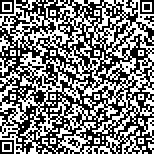|
| 引用本文: | 罗晓凡,魏 皓,王玉衡.黄、东海水母质点追踪影响因素分析.海洋与湖沼,2012,43(3):635-642. |
| |
|
| |
|
|
| 本文已被:浏览 2954次 下载 2281次 |

码上扫一扫! |
|
|
| 黄、东海水母质点追踪影响因素分析 |
|
罗晓凡, 魏 皓, 王玉衡
|
|
天津科技大学海洋科学与工程学院
|
|
| 摘要: |
| 基于数值模型采用质点追踪的方法对大型水母的运移规律及其聚集的影响因素进行了研究。本文共设置6个质点释放区, 分别从3、4、5月1日释放后追踪至9月30日。主要结论有: (1) 采用不含潮汐过程与包含潮汐过程的水动力模式分别对表层质点进行追踪, 结果表明含潮汐混合和潮汐非线性效应的POM模式对质点时空分布的模拟较为可靠; (2) 基于含潮汐过程的POM模式气候态模拟结果, 考虑质点垂直运动进行追踪, 质点运移速度较表层追踪大大减慢, 进入朝鲜/对马海峡的质点减少; 其中济州岛沿岸质点几乎全部穿过朝鲜/对马海峡进入日本海, 其它释放区质点最终广泛分布在南黄海以及东海中陆架, 主要在黄海潮汐锋区和长江口以南沿岸锋聚集; (3) 通过分析不同释放时间对质点在9 月末分布的影响发现, 质点释放时间偏早, 即水母幼体形成较早, 将使相对较多的质点向朝鲜/对马海峡聚集。 |
| 关键词: 大型水母迁移与聚集, 质点追踪, 动力过程, 黄、东海 |
| DOI:10.11693/hyhz201203034034 |
| 分类号: |
| 基金项目:国家重点基础研究发展计划(973)项目, 2011CB403606 号, 2010CB428904 号; 国家自然科学重点基金, 40830854 号 |
| 附件 |
|
| PROCESSES INFLUENCING JELLYFISH PARTICLE TRACKING IN THE YELLOW SEA AND EAST CHINA SEA |
|
LUO Xiao-Fan, WEI Hao, WANG Yu-Heng
|
|
College of Marine Science and Engineering, Tianjin University of Science and Technology
|
| Abstract: |
| Particle-tracking based on numerical model can provide estimates to drifting pathways and help us understand processes that influence jellyfish gathering and blooming. We released particles in six areas on March 1, April 1 and May 1, respectively, and tracked them until September 30. The following results were obtained. (1) By comparing the tracking of surface particles based on the hydrodynamic model excluding tides and including tides, we found that the temporal and spatial distribution of particles simulated by POM was more reliable. (2) On the basis of POM driven by tides and climatologic forcing and the diel vertical movement, particles drifted more slowly, and less of them entered the Korea/Tsushima Strait compared with the simulation without diel vertical movement. Nearly all of the particles released near the Jeju Island flowed through the Korea/Tsushima Strait and entered the Japan Sea while particles released in the other areas spread widely in the southern Yellow Sea and inner-middle shelf of the East China Sea. The simulated particles mainly aggregated near tidal fronts in the Yellow Sea and along the coastal front in the south of the Yangtze Estuary. (3) We analyzed the final positions of particles released in different months. The particles (i.e. larva medusa) released at an earlier time tended to reach the Korea/Tsushima Strait. |
| Key words: Drifting of the giant jellyfish, Particle-tracking, Dynamic process, Yellow Sea and East China Sea |
|
|
|
|
|
